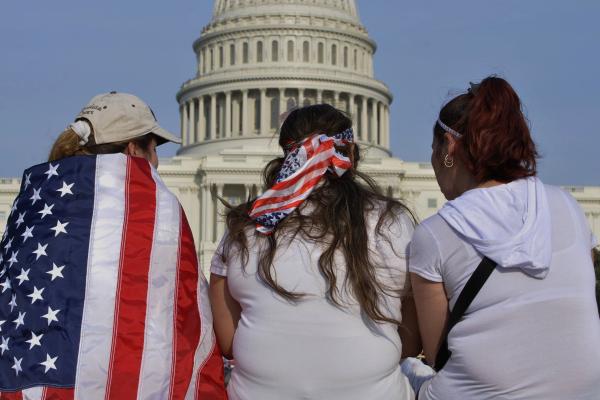ON MAY 1, 1986, a federal jury found nine church activists guilty of conspiracy to violate U.S. immigration laws for assisting Central American refugees. At our sentencing, I faced a possible 25-year prison sentence.
The “sanctuary trial” drew national attention; millions of Americans learned about the plight of Central American refugees and the church-led sanctuary movement to aid them. After a seven-month trial and our conviction, the judge suspended our sentence and gave us five years of probation.
In the 1980s, our case hinged on the fact that we knew that those arriving over the southern border were refugees from brutal wars in Guatemala and El Salvador. I had worked in Guatemala and in Guatemalan camps in southern Mexican. We placed refugees in communities of faith where people met them as real people and learned why they had fled. We defied U.S. immigration laws in order to protect life. We also challenged the Reagan administration’s support of brutal regimes in Guatemala and El Salvador.
Today, most of the non-Mexican undocumented immigrants coming over the border are from Guatemala, El Salvador, and Honduras. Many are unaccompanied minors or single adults with children. Many have legitimate asylum cases, but don’t have adequate legal representation.
The new sanctuary movement is addressing four key areas: First, assisting migrants when they arrive with basic needs and legal help. Diocesan Migrant Refugee Services in El Paso, Texas, is the largest provider of “Know Your Rights” information to refugees, particularly those staying in community-run hospitality houses along the border. Without the assistance of volunteers, usually church-affiliated, migrants would be on their own—or worse, detained in for-profit prisons.
The Austin-based nonprofit Grassroots Leadership provides research and documentation on the growth of the for-profit prison system—a field dominated by Corrections Corporation of America and the GEO Group. U.S. policies that pay Mexico to catch refugees before they enter the U.S. and the use of for-profit prisons (with the financial incentive to keep them full) keep U.S. citizens separated from refugees, making it harder to know them as individual people.
Second, organizing for humane immigration reform and to win just legal treatment for immigrants, especially those who are undocumented and their families. Two years ago President Obama attempted to move immigration reform forward through his executive actions on Deferred Action for Parents of Americans (DAPA) and Deferred Action for Childhood Arrivals (DACA). In June, the deadlocked Supreme Court vote on DAPA ended Obama’s immigration reform efforts by upholding a lower-court injunction. This is devastating for more than 16 million people in “mixed status” families living in the United States. Immigration attorneys agree that this should not affect the status of more than 800,000 young Dreamers protected by Obama’s 2012 DACA action. However, since DACA is the result of an executive action rather than a law passed by Congress, the incoming president could rescind it.
Third, protecting immigrants from deportation. Several denominations have taken strong action in support of immigrants’ needs. In June, the Presbyterian Church (USA) reaffirmed its commitment to the “the ministry of sanctuary” and for “those congregations that have supported and offered sanctuary to immigrants threatened with deportation.”
Fourth, meeting people before they migrate and learning the complexities of why they leave. In 2015, I joined a pilgrimage to Honduras and Guatemala developed specifically to help U.S. citizens understand the factors that compel migration. Some U.S. policies set in place to protect multinational corporations contribute to conditions that compel migration.
In the 1980s, there were more than 500 sanctuary churches and synagogues, at least 19 sanctuary cities, 20 sanctuary universities, and one sanctuary state, New Mexico. How will we encounter the divine in the face of refugees today? What risks will we take in order to protect their lives?

Got something to say about what you're reading? We value your feedback!

